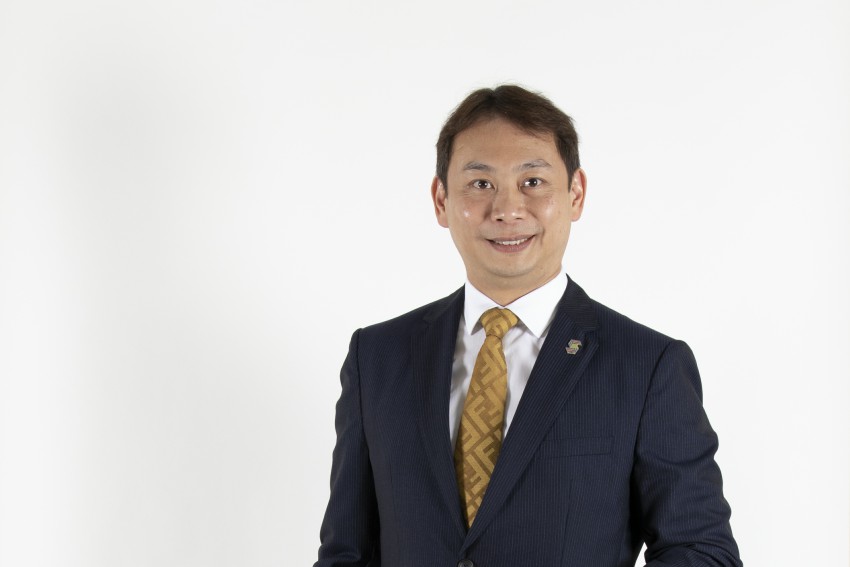Singapore Manufacturing Federation (SMF) serves the manufacturing community by driving digitalization, innovation-led productivity, business transformation and internationalization towards enhancing the competitiveness of its member companies. In this interview, SMF President, Mr. Douglas Foo discussed his outlook for the sector, and outlined his vision for a fully-digitalized manufacturing industry.

Manufacturing makes up 20% of Singapore’s economy. How do you see the future of the sector and how ready is it to incorporate Industry 4.0?
In ASEAN, if you look at Vietnam, Philippines and Indonesia, the middle income is moving. This will change the whole dynamics of manufacturing activities. We are very optimistic about the potential of manufacturing making a significant contribution to the whole Singapore economy.
Many people will be very surprised that Singapore, a country that has limited land and manpower, does manufacturing. But the scenario becomes different when we use ASEAN as our manufacturing hub. As SMF, we started that journey six years ago as part of a business model innovation. That is why we changed our name from Singapore Manufacturers’ Federation to Singapore Manufacturing Federation. A manufacturer has to own a plant. This need not necessarily be so anymore in Singapore. That is the new manufacturing space and enterprises in Singapore have to understand that.
The entire narrative of using the whole of ASEAN as a manufacturing hub is only possible because of this digital age and IoT. Singapore will continue to play a very key role in prototyping, research and development, building that business model that connects, utilizing and harnessing the strength of its 10 ASEAN neighbors. At the same time while this is happening, we are also lifting up everybody. So this is inclusive growth. We have gone through this before. We were low cost. But then, our cost crept up, and the companies left. The countries in ASEAN can leap frog by working with us and learning from Singapore’s experience. Today, not all the 10 economies at this stage can do semiconductor manufacturing, but eventually they will all be able to do it. But this does not mean we are competitors. We are collaborative partners as we can fit some of the parts that we are creating into a product to solve the world's problems.
What do you believe defines Singaporean in manufacturing today and what differentiates it from the competition?
For Singapore, we went through the MNCs coming in, so we went from not knowing much about manufacturing to being trained in the skillsets. We were learning and absorbing as a very new nation about these whole new dynamics of the manufacturing economy. Today, our strength is a lot more on what our prime minister had mentioned in the recent May Labor Day message about tripartitism. Tripartitism is about the unions, the government and the employers. In the different economic cycles, it will be necessary for those three parties to take different stances because their roles are quite different.
Singapore in the last 53 years has been a very stable place to operate for manufacturing. That’s because of the tripartite relations, which we worked very hard to build. To us, that is social capital where it has been painstakingly put into everybody's mind that we are all part of the building of our economy because every action has a large impact on a much bigger scale. The key is to unify people together to be a common workforce to realize the needs of our economy. We are very strong in this and that has been something that has driven the Singapore economy since independence.
How would you like to see the SMF in the years to come?
We just launched the SMF Roadmap 2020. Industry 4.0 is a journey. It is about adopting new manufacturing concepts. We are working on bringing that into the equation in order to build an innovative business model.
We are also helping the nation’s 200,000 enterprises to digitalize. By 2020, we hope to complete our SMF 2020 vision of manufacturing as a service. There are still factories in Singapore, but you can’t ensure all factories are always optimized to their fullest capacity. Therefore, SMF has got a cloud which enables companies to load up their excess capacity onto the cloud, so startups that do not have a factory can make use of it. All these changes require a lot of complex artificial intelligence and machine learning.
That is our vision for 2020. By then, we hope that all this will be launched in Singapore and further on, we want the whole ASEAN to move into this platform. All these technologies are already in place. We have been working very concurrently and taking the lead from the government on how we move forward. But now we can see all of these opportunities and possibilities and we have decided that we will jump in and we will co-create the new future of manufacturing for Singapore and for ASEAN.
0 COMMENTS